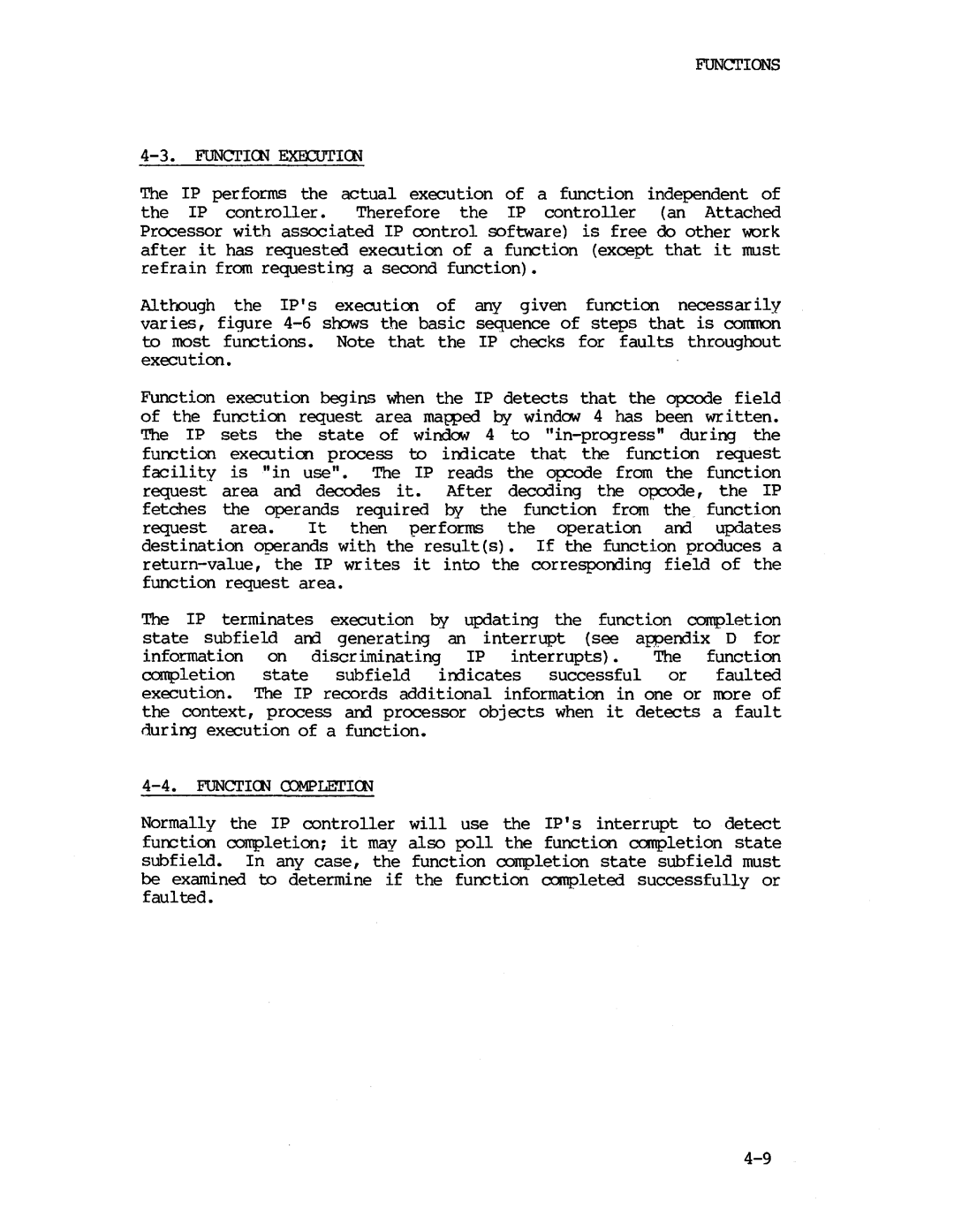
FUNcrIONS
4-3. FUNcrICN EXOCUTICN
The IP per forms the actual execution of a function independent of
the IP controller. Therefore the IP controller (an Attached Processor with associated IP control software) is free do other work after it has requested execution of a function (except that it must refrain from requesting a second function).
Altr~ugh the IP's execution of any given function necessarily varies, figure
Function execution begi~~ when the IP detects that the opcode field of the function request area mawed by window 4 has been written. The IP sets the state of window 4 to
request area. It then performs the operation am updates destination operands with the result(s). If the function produces a
The IP terminates execution by updating the function completion state subfield arrl generating an interrupt (see awendix D for
information on discriminating IP interrupts). The function
completion state subfield irrlicates successful or faulted execution. The IP records additional information in one or more of the context, process arrl processor objects when it detects a fault during execution of a function.
Normally the IP controller will use the IP's interrupt to detect function completion; it may also poll the function completion state subfield. In any case, the function completion state subfield must be examined to determine if the function completed successfully or faulted.
